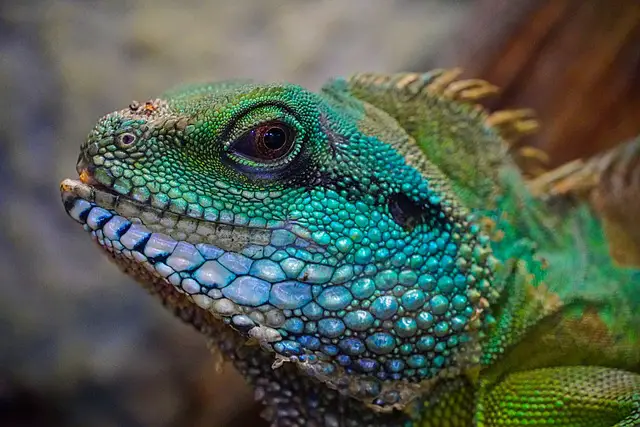Reptiles are some of the fascinating creatures on Earth, with various shapes, sizes, and behaviors. But despite their differences, all reptiles have certain things in common that make them distinct from other animals. So let’s look at what sets reptiles apart from the rest of the animal kingdom.
What do all Reptiles have in Common?
1. All reptiles are ectothermic.
All reptiles have a few critical things in common. Primarily, reptiles are ectothermic, meaning they rely on external environmental sources such as the sun to regulate their body temperature.
This differs from endothermic animals, which generate their heat internally.
Reptiles can vary significantly in form and size depending on the species, but they all possess scales and generally lay eggs with protective layers like shells or leathery skins.
Additionally, virtually all reptiles have adaptations that enable them to survive better in more extreme habitats such as deserts or icy tundras.
However, even though they are well-equipped to deal with many conditions, climate change has caused severe harm to reptile populations worldwide due to their inability to react quickly to environmental changes.
Nevertheless, it is safe to say that reptiles share specific sturdy characteristics that give them an advantage in this challenging environment.
2. All reptiles have dry, scaly skin.
Reptiles are distinct animals that differ from amphibians, birds, and mammals.
Among these notable characteristics is dry, scaly skin.
The scales on their skin give reptiles several benefits, such as water-retention abilities and protection from predators.
These scales also help regulate their body temperatures in hotter climates by absorbing heat from the sun.
Reptiles also have particular organs within their heads and jaws called glands, which produce venom, aiding in self-defense.
Furthermore, reptiles are distinguished by laying eggs with leathery shells; live birth can also occur in certain species. These traits provide fascinating biological insight and make them one of the most successful terrestrial groups on Earth today.
3. All reptiles lay eggs.
Despite their diversity, all reptiles share one other characteristic – they reproduce by laying eggs.
The egg-laying process allows reptiles to spend less time providing parental care; most eggs are buried in warm sand or tucked away into a nook until they hatch, after which adult supervision rarely occurs.
Reptiles are found on every continent except Antarctica and boast numerous unique adaptations for survival in different habitats; one thing unites them all, though – the ability to lay shelled eggs for reproduction.
4. All reptiles are carnivorous or omnivorous.
Reptiles are a fascinating class of animals – they inhabit many different environments, but they all share some essential characteristics.
All reptiles are ectotherms, meaning that their core body temperature fluctuates according to the temperature of their surroundings.
Many also possess a protective layer of skin covered with scales and ridges, helping them to survive in hostile environments.
Furthermore, they are all carnivorous or omnivorous, depending on the species – lizards often eat insects and small invertebrates, while snakes might consume rodents or other reptiles.
They may have different shapes and sizes due to adaptation to their environment, but all reptiles share these essential features.
5. All reptiles are cold-blooded.
Reptiles are a fascinating, diverse group of animals whose members have many different characteristics and features.
One thing that unites them all is that they are cold-blooded, meaning their body temperatures are regulated by the environment surrounding them.
As a result, these animals must often sun themselves in warm locations or seek shade to keep their bodies from overheating.
Regarding physiology, reptiles also typically have scales or leathery skin, claws, and relatively small skulls. It’s this combination of traits that makes reptiles both ancient as well as familiar-looking creatures to us humans.
6. Reproductive Habits
Reptiles also differ from mammals in their reproductive habits.
Most species lay eggs rather than giving birth to live young, though there are a few exceptions, like viviparous lizards and some snakes that give birth to live babies.
Many species also practice ovoviviparity, meaning they still lay eggs but keep them within the mother’s body until they hatch after gestation.
7. Dietary Needs
The dietary needs of reptiles vary widely depending on the species you’re dealing with, but generally, all reptiles need protein as a critical part of their diets.
Some reptile species may eat insects or other small prey items, while others—like large constrictor snakes—may require larger prey such as rodents or rabbits.
Owners must research their pet’s specific dietary needs to provide adequate nutrition for optimal health and wellness.
Conclusion
No matter what type of reptile you own or admire, it’s important to remember that all reptiles share specific characteristics—from their scaly skin and cold-blooded bodies to their unique reproductive habits and dietary needs. With an understanding of these essential characteristics, anyone can become better equipped to care for and appreciate these remarkable creatures.




